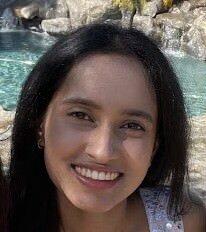With a dropout rate exceeding 20 percent in 2008, California’s high schools are in a state of disrepair causing school administrators throughout the state to search for a fix to the educational system.
Across the country, schools have put increased emphasis on using different styles of teaching to accommodate students in a way that will be most conducive to promoting academic achievement. This phenomenon of understanding learning styles and applying the findings to teaching has occurred at Saratoga High where teachers and administrators have made attempts to assess learning styles in order to provide the best classroom experience for students.
Assistant Principal Brian Safine believes teachers here are highly trained to handle individual student learning styles.
“Many teachers on campus are highly skilled in incorporating a number of different learning styles into their lessons,” said Safine. “I see our teachers tapping into bodily kinesthetic learning styles, musical learning styles and verbal linguistic learning styles.”
Safine said the guidance office is making an effort to assess student learning styles through the online tool of Naviance. Last spring, sophomores filled out a survey on Naviance to discover their personality types and preferred learning methods.
“We encourage students to understand what kind of learner they are and what kind of personality type they have,” said Safine.
He believes there is value in these surveys as they can help students to discover new opportunities and future career paths.
“Doing those surveys on Naviance from scratch could allow students to pursue areas of study and maybe even future careers that they hadn’t considered before,” said Safine. “I think the best job we can do as the guidance department in terms of using Naviance as a tool is to expose students to careers and majors they haven’t thought about.”
Since last spring when the guidance department conducted a presentation on Naviance, the school has been making a concerted effort to not only help students discover their own individual learning techniques, but also to apply different teaching styles in a classroom environment.
“Last year we spent quite a bit of time on differentiated instruction where we looked at how students learn and teachers were trained in ways to address different learning styles,” said Safine.
Although not all teachers are specifically using the results of the Naviance surveys to influence classroom activities, Safine believes that Saratoga’s teachers are acutely aware of the need to address a variety of different learning styles within the classroom, a point that is especially important given the 95-minute block period schedule.
“The teachers have been doing a good job of differentiating and varying the instruction,” said Safine. “I’ve visited about 15 classrooms this year, and I would say the longest I’ve seen one teacher stick to a particular activity would be about half an hour.”
According to Safine, the initial goal of the Naviance program was to get students to understand themselves better. A secondary goal that has evolved is the incorporation of that data by teachers into their classroom activities.
“Teachers are doing their best to accommodate different learning styles,” said Safine. “From what I’ve seen, this appears to be the rule rather than the exception.”
In years to come, the school hopes to continue experimenting with different surveys to paint a better picture of students’ learning styles. Safine said the ultimate goal is to provide a classroom atmosphere where all student learning styles can be accommodated by varied teaching methods.


























